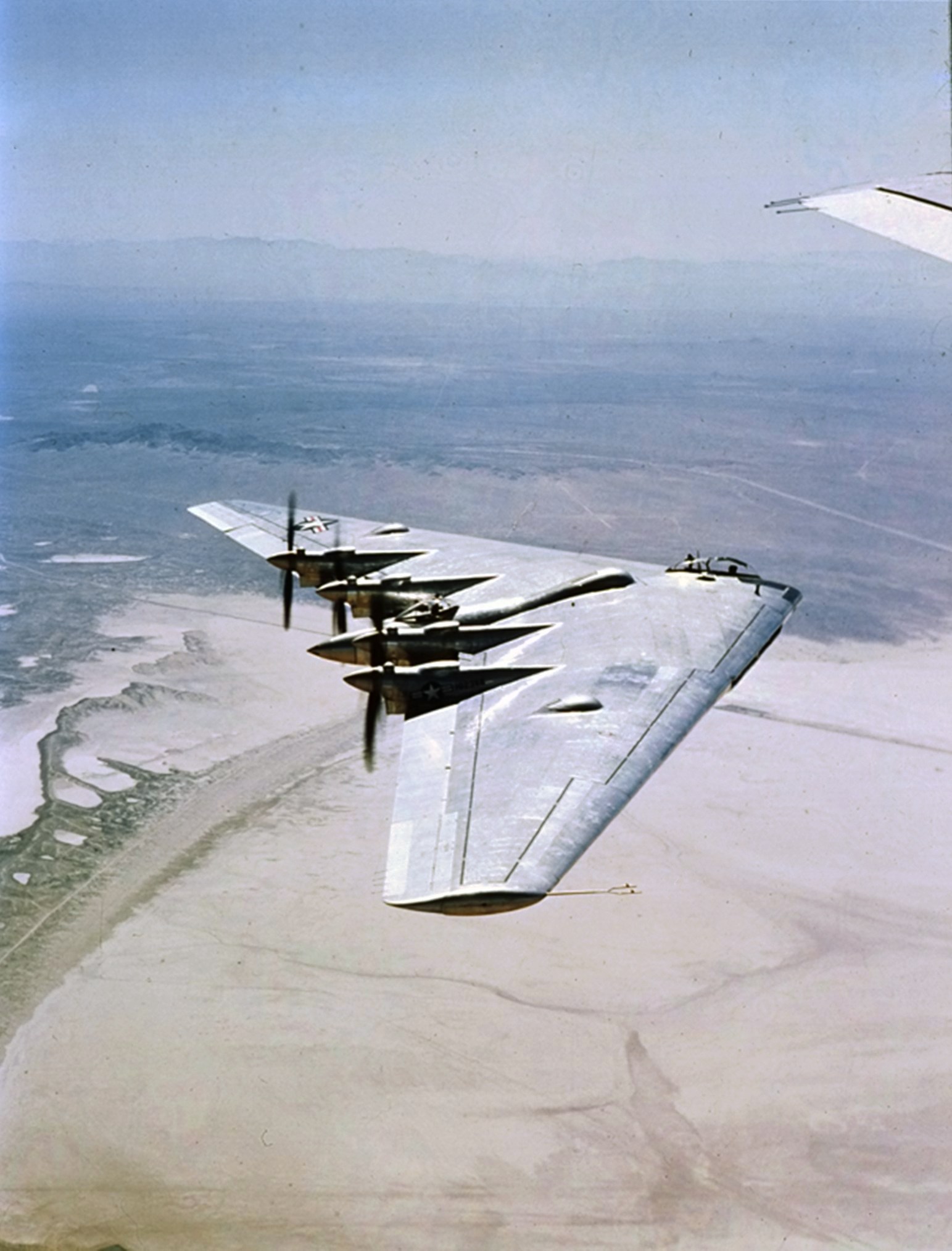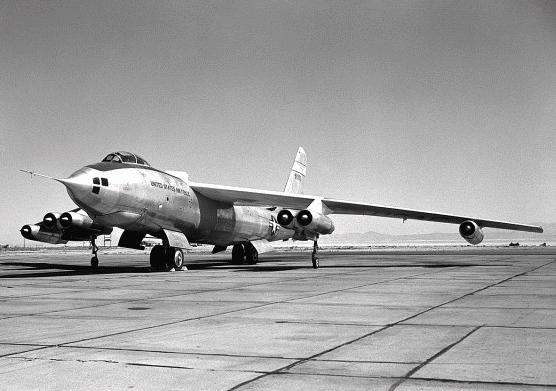More bombers will be added.
Northrop YB-49:

The Northrop YB-49 was a prototype jet-powered heavy bomber aircraft developed by Northrop shortly after World War II. Intended for service with the U.S. Air Force, the YB-49 featured a flying wing design. It was a jet-powered development of the earlier, piston-engined Northrop XB-35 and YB-35; the two YB-49s actually built were both converted YB-35 test aircraft.
The YB-49 never entered production, being passed over in favor of the more conventional Convair B-36 Peacemaker piston-driven design. Design work performed in the development of the YB-35 and YB-49 nonetheless proved to be valuable to Northrop in the eventual development of the current day B-2 Spirit strategic bomber which first entered operational service in the 1990s.
http://en.wikipedia.org/wiki/Northrop_YB-49I think these pitcures match the tail gunner description:


YB-39:

The Northrop XB-35 and YB-35 were experimental heavy bomber aircraft developed for the United States Army Air Forces during and shortly after World War II by the Northrop Corporation. It used the radical and potentially very efficient flying wing design, in which the tail section and fuselage are eliminated and all payload is carried in a thick wing. Only prototype and pre-production aircraft were built, although interest remained strong enough to warrant further development of the aircraft as a jet bomber, under the designation YB-49.
http://en.wikipedia.org/wiki/Northrop_YB-35http://northrop.host.sk/northrop_xb35.htm XB-19:

The Douglas XB-19 was the largest bomber aircraft built for the United States Army Air Corps until 1946. It was originally given the designation XBLR-2 (XBLR- denoting Experimental Bomber, Long Range).
http://en.wikipedia.org/wiki/XB-19http://www.air-and-space.com/Douglas%20XB-19.htm Tu-95 Bear:

The Tupolev Tu-95 is a large, four-engine turboprop-powered strategic bomber and missile platform. First flown in
1952, the Tu-95 entered service with the former Soviet Union in 1956 and is expected to serve the Russian Air Force until at least 2040.[1] A naval development of the bomber is designated Tu-142.
The aircraft has four Kuznetsov NK-12 engines, each driving contra-rotating propellers. An airliner variant Tu-114 holds the record as the world's fastest propeller-driven aircraft. Some experimental aircraft were designed for theoretically higher speeds, but none attained or registered them. It also remains the only turboprop-powered strategic bomber in operational use. Its distinctively swept-back wings are at 35°, a very sharp angle by the standards of propeller-driven aircraft, and justified by its operating speeds and altitudes. Its blades, which rotate faster than the speed of sound, according to one media source, make it arguably the noisiest military aircraft on earth, with only the experimental 1950s era Republic XF-84H "Thunderscreech" turboprop powered American fighter design as a likely rival.
http://en.wikipedia.org/wiki/Tupolev_Tu-95
cockpit

board-technic

navigator

rear gunner (sight)

B-47 Stratojet:
The Boeing Model 450 B-47 Stratojet was a long-range, six-engined, jet-powered medium bomber built to fly at high subsonic speeds and at high altitudes. It was primarily designed to drop nuclear bombs on the Soviet Union. With its engines carried in pods under the swept wing, the B-47 was a major innovation in post-World War II combat jet design, and helped lead to modern jet airliners.
The B-47 entered service with the United States Air Force's Strategic Air Command (SAC) in 1951. It never saw combat as a bomber, but was a mainstay of SAC's bomber strength during the 1950s and early 1960s, and remained in use as a bomber until 1965. It was also adapted to a number of other missions, including photo reconnaissance, electronic intelligence and weather reconnaissance, remaining in service as a reconnaissance platform until 1969 and as a testbed until 1977.
http://en.wikipedia.org/wiki/Boeing_B-47_Stratojet


 Author
Topic: My bomber wishlist (Read 6288 times)
Author
Topic: My bomber wishlist (Read 6288 times)


